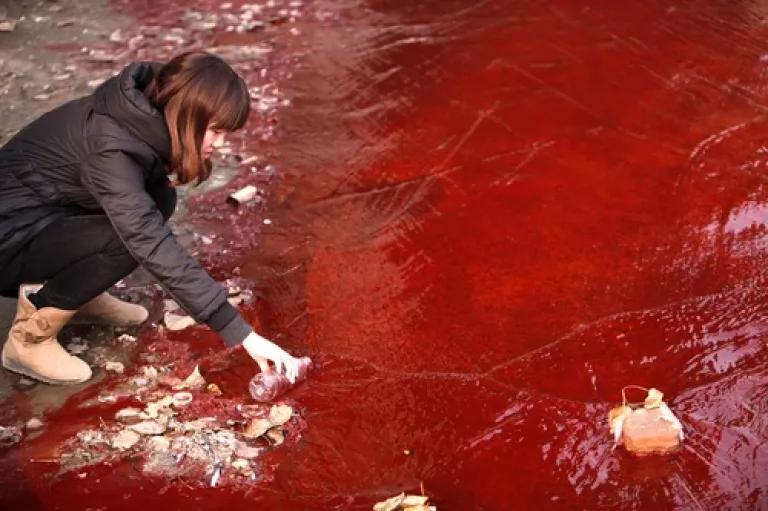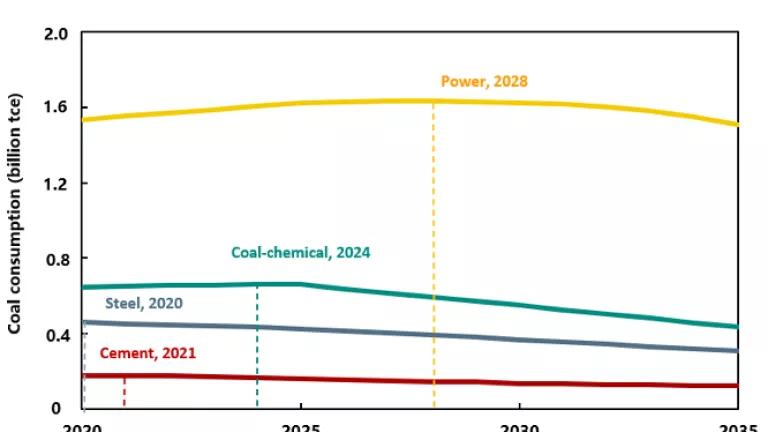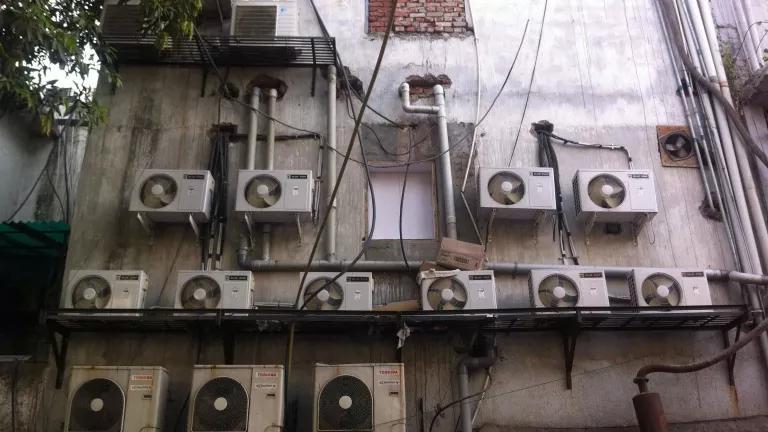Few people think of the fashion industry as a heavy industry like steel or cement. However, the dyeing and finishing of fabric has an enormous environmental footprint, using large quantities of chemicals to pre-treat fabric and dye it the colors we love, as well as extensive steam and rinse water. The industry is one of the highest-ranking industrial water polluters in the world. It has recently been targeted by Greenpeace International to radically reduce its chemical use.
Here is NRDC’s 5-step program for companies that are serious about phasing-out their reliance on toxic chemicals. It’s a blueprint framed around the Greenpeace’s “Detox Campaign,” which calls for the phase-out of 11 categories of toxic chemicals in textile manufacture by 2020 [and has provided a much-needed sense of urgency to the apparel industry to change the way it does business around the world. Despite an explosion of collaborative consultations and meetings among brands and retailers (Roadmap to Zero), the companies that have committed on paper to comply with the Greenpeace campaign to date and the many others living in fear of imminent Greenpeace targeting have not come forward with work-plans that inspire confidence they will get the job done.

December 13, 2011: China’s Luoyang¡¯s Jian River becomes contaminated with dye from discharge of untreated wastewater into storm water pipes. The workshops were shut down that day.
Photo by Zhang Xiaoli/ChinaFotoPress
So for those companies who are committed to phasing-out their reliance on toxic chemicals, here’s how they can do it:
Create reduction goals that are results-oriented (not process), with explicit dates and milestones for achieving reductions. Goals should look like this: Phase out all use of chlorinated solvents by 2014. Or, if that is too ambitious: phase out use of chlorinated solvents in all synthetics mills by the end of 2014. Or, if even that is too ambitious, how about: phase out all use of chlorinated solvents in 80% of all synthetics mills in China by the end of 2013, require phase out at the next 25 largest mills by the end of 2014.
NOTE: Current pledges to “convene a group,” “explore platforms,” “provide updates,” “create roadmaps,” “demand collective action,” etc., fall far short of what is needed to deliver change on the ground: these commitments are the HOW, not the WHAT. Go for low-hanging fruit: Banish the chemicals within closest reach first.
Start at your vertically integrated facilities—those factories that dye fabric and cut and sew your garments. These are your easiest targets since you have on-going direct contract relationships with these factories. Fortunately, these facilities often represent large and important strategic suppliers as well, which will enable you to have a big impact through activities in a small number of places.
Some of the world’s most dangerous chemicals, notorious around the world and already the target of many government and international programs are on what I call the “dead chemical” list, are the easiest to target and should be eliminated right away. Specifically, chlorobenzenes and chlorophenols, as well as azo dyes which form prohibited amines, have been on the Restricted Substance Lists for responsible brands for some time and are thought to be largely out of use in the textile industry. Brands should commit to a 2014 firm phase out for these chemicals that are already out of use.
Similarly the brominated and chlorinated flame retardants, chlorinated solvents, and short-chained chlorinated parafins (SCCP) should prove relatively easy to phase down. A 2015 phase out goal for these three categories would perhaps be feasible.
Those chemicals/formulations without currently viable alternatives should be scheduled as the last to go to give time for research to take place.
Use the 80/20 rule to gear the commitments up to scale quickly. Apparel companies rightly point to the hundreds of factories and fabric mills that supply their goods as a main stumbling block to quick implementation of any new rule book. However, most agree that if they look, it is a much, much smaller universe of fabric mills that provide the bulk of production. Brands should target the biggest mills first, and then move to the smaller operators later. They should develop “80/20 plans”: plans that initially target 80% of production, 80% of cotton/blend production, 80% of denim production, etc. Fill critical information gaps with research of two types: the chemical composition of commonly used formulations and the alternative formulations that are available.
Many mills use formulations without knowledge of their chemical composition, or they buy “off brand” products without realizing they are poor substitutes. Brands must step up to the plate here (either alone or in collaboration) and test the products used at their mills. They should ask their mills to send samples of the products and formulations they use and send those samples to a laboratory for a scan of the Greenpeace chemical categories. Collaboration across brands would clearly be useful here, such as creating a third-party repository and a single list of banned products, if and only if companies can coordinate quickly enough to ensure that they meet their reduction deadlines.
Research to identify alternatives is also crucial for the change we need to see in the industry by 2020. Again, collaboration across brands would clearly be more efficient for the industry, if it is possible to get this up and running expeditiously.
With results in hand, retailers/brands should then provide an explicit list of the formulations that contain banned substances to the mills, with dates for their phase outs, as well as a list of preferred chemicals and formulations. This will provide a clear path forward for factories to transition away from problem uses.
Create clear, sourcing policies with teeth that deliver business consequences to non-compliance.
The only way to make the Greenpeace commitments real is for the sourcing team to contractually require them, with consequences —suspension or termination of business — for failure to do so. In fact, it is the sourcing team that needs to own the Greenpeace commitments, not the CSR shop. Any phase-out plan owned and operated solely through the CSR shop is a fake and will not deliver results. This approach is very different from the “we’re-all-in-this-sustainability-journey-together” mentality that many companies have brought to their CSR work to date and will require changes in hierarchies, ownership, and management for many of you.
There is no doubt that implementation of the Greenpeace commitments is a challenge for the industry. Most brands know their Tier One garment (“cut and sew”) factories but not the Tier Two fabric dyeing and finishing mills, which is where the chemicals of concern are used and released. Traceability of products through the supply chain is an ongoing challenge, which, to date, has been focused largely on small, special product lines (such as organic cotton) and not the bulk of wet processing production. Until now, chemical concerns have been limited to chemicals on the residue of clothing (Restricted Substances Lists from AAFA.pdf) and not on the chemicals used and released in manufacturing. And, let’s be honest with ourselves: Only a very small handful of retailers and brands have ever even once assessed overall wastewater compliance at their fabric mills, let alone overseen or enforced a program limiting specific chemicals used and released at these sites.
However, we can also all agree that the curtain is rising on the problems being generated by textile manufacturing in China and elsewhere in the developing world. International groups like Greenpeace are routinely showcasing problems to worldwide attention and acclaim (Hidden Consequences.pdf), and NGOs such as the Institute for Public and Environmental Affairs (IPE), are quickly developing an increasing head-turning capacity in an information-starved China, by outing problem factories across that nation in a highly accessible way (IPE's Cleaning up the Fashion Industry and IPE's The Other Side of Apple Report.pdf). Given the ready access the public has to the internet and social media around the world, it is becoming increasingly difficult to multinationals to maintain a credible reaction of surprise and dismay to public exposes of the environmental damaged caused by factories in their supply chains around the world.
From this perspective, the Greenpeace campaign can be seen as much needed makeover for the fashion industry, and NRDC’s 5-step blueprint as the way to get there. And it is an important incentive to the other industries manufacturing the pharmaceuticals, paper, furniture, plastics, and other consumer goods we use every day: If you guys can manage a supply chain to deliver high-quality products on time and at low cost, from hundreds of factories to thousands of retail outlets around the world, it should also be possible to ensure that those factories are minimizing the damage they cause to the air and water in their surrounding communities.

December 13, 2011: China’s Luoyang¡¯s Jian River becomes contaminated with dye from discharge of untreated wastewater into storm water pipes. The workshops were shut down that day.
Photo by Zhang Xiaoli/ChinaFotoPress
Public expectations of industry are high and rapidly rising around the world, and the fashion industry, so highly respected for its creativity, vision, and power of persuasion with consumers, is well suited to take the lead in responding to the public in this brave new world.



